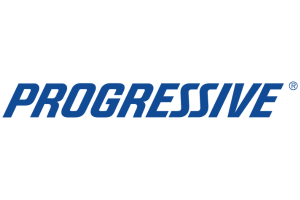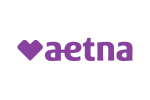How much is health insurance for a 17 year-old female?
Are you wondering about the cost of health insurance for a 17-year-old female? This article provides insights into the pricing factors and options available, helping you understand how much health insurance might cost for a young woman in today's market.
Read more Secured with SHA-256 Encryption






Find the Lowest Car Insurance Rates Today
Quote’s drivers have found rates as low as $42/month in the last few days!




Table of Contents
Table of Contents


Insurance Content Managing Editor
Daniel S. Young began his professional career as chief editor of The Chanticleer, a Jacksonville State University newspaper. He also contributed to The Anniston Star, a local newspaper in Alabama. Daniel holds a BA in Communication and is pursuing an MA in Journalism & Media Studies at the University of Alabama. With a strong desire to help others protect their investments, Daniel has writt...
Daniel S. Young


Licensed Insurance Producer
Dani Best has been a licensed insurance producer for nearly 10 years. Dani began her insurance career in a sales role with State Farm in 2014. During her time in sales, she graduated with her Bachelors in Psychology from Capella University and is currently earning her Masters in Marriage and Family Therapy. Since 2014, Dani has held and maintains licenses in Life, Disability, Property, and Casualt...
Dani Best
Updated January 2025
Health insurance is an essential aspect of healthcare for individuals of all ages, including teenagers. For a 17-year-old female, understanding the intricacies of health insurance can help in making informed decisions about coverage options and related costs. In this article, we delve into the factors that affect the cost of health insurance for a 17-year-old female and explore ways to lower those costs. Additionally, we provide guidance on choosing the right health insurance plan.
Understanding Health Insurance
Before diving into the specifics, it is crucial to have a clear understanding of what health insurance entails. Health insurance is a contract between an individual and an insurance provider where the insurer agrees to pay for medical expenses in exchange for premiums. This coverage can include a wide range of healthcare services, such as doctor visits, hospital stays, medications, and preventive care.
Health insurance is an essential component of the healthcare system, providing individuals with financial protection against the high costs of medical treatments. It allows people to seek necessary medical care without worrying about the financial burden it may impose.
When individuals have health insurance, they gain access to a network of healthcare providers who have agreed to provide services at discounted rates negotiated by the insurer. This network ensures that policyholders have a wide range of options when it comes to choosing healthcare providers and facilities.
What is Health Insurance?
Health insurance aims to alleviate the financial burden of healthcare costs by spreading the risk among a large number of individuals. By paying a regular premium, policyholders gain access to a network of healthcare providers who have agreed to provide services at discounted rates negotiated by the insurer.
Health insurance also offers various types of plans, such as HMOs (Health Maintenance Organizations), PPOs (Preferred Provider Organizations), and EPOs (Exclusive Provider Organizations). Each plan has its own set of rules and regulations, determining the extent of coverage and the flexibility of choosing healthcare providers.
Furthermore, health insurance plans often include additional benefits, such as coverage for prescription medications, mental health services, and preventive care. These additional benefits aim to promote overall well-being and help individuals maintain good health.
Importance of Health Insurance for Teenagers
Teenagers face unique health risks and challenges. While they may be generally healthy, accidents or unexpected illnesses can occur. Health insurance ensures that teenagers have access to necessary medical care when needed, safeguarding their physical and financial well-being.
Having health insurance as a teenager not only provides financial protection but also encourages the development of healthy habits and preventive care. Regular check-ups, vaccinations, and screenings can help identify any potential health issues early on and prevent them from becoming more serious.
In addition, health insurance for teenagers often covers mental health services, which is crucial during this stage of life. It provides access to counseling and therapy, helping teenagers navigate the challenges they may face, such as stress, anxiety, and depression.
Health insurance also offers teenagers the opportunity to learn about managing their own healthcare. It teaches them about the importance of insurance coverage, understanding medical bills, and making informed decisions about their health.
In conclusion, health insurance plays a vital role in our lives, providing financial protection and access to necessary medical care. Understanding the intricacies of health insurance is essential for individuals of all ages, including teenagers, to ensure their well-being and peace of mind.
Free Health Insurance Comparison
Compare Quotes From Top Companies and Save
Secured with SHA-256 Encryption
Factors Affecting the Cost of Health Insurance for a 17-Year-Old Female
Age and Gender
The age and gender of an individual play a significant role in determining health insurance costs. Insurers consider teenagers to be generally healthier and less prone to medical conditions, resulting in lower premiums compared to older individuals. However, gender can influence costs as well, as certain conditions may be more prevalent in females.
When it comes to age, being a 17-year-old female can be advantageous in terms of health insurance costs. Teenagers are often seen as having better overall health and fewer pre-existing conditions compared to older individuals. This means that insurance providers are more likely to offer lower premiums to teenagers, as they are considered to be at a lower risk of requiring extensive medical care.
Additionally, gender can also impact health insurance costs for a 17-year-old female. Certain medical conditions, such as reproductive health issues or higher rates of mental health conditions, may be more prevalent in females. Insurance companies take these factors into account when determining premiums, as they may anticipate a higher likelihood of medical expenses related to these conditions.
Location
The location in which a 17-year-old female resides can impact health insurance costs. Insurance companies analyze factors such as the cost of living and healthcare services within a specific area to determine premiums and coverage options.
Where a person lives can greatly influence health insurance costs for a 17-year-old female. Factors such as the cost of living, average income levels, and availability of healthcare services can vary significantly from one location to another. Insurance providers take these factors into consideration when determining premiums, as they reflect the overall healthcare expenses in a particular area.
For example, if a 17-year-old female lives in an area with a high cost of living and expensive healthcare services, insurance providers may charge higher premiums to account for the increased medical expenses. On the other hand, if she resides in an area with a lower cost of living and more affordable healthcare options, insurance premiums may be lower.
Health Status and Medical History
The overall health status and medical history of a teenager can affect insurance costs. Pre-existing conditions or a history of significant medical procedures may lead to higher premiums or limited coverage. However, laws often protect individuals with pre-existing conditions from being denied coverage or facing exorbitant costs.
When it comes to health insurance costs for a 17-year-old female, her overall health status and medical history are important factors to consider. If she has a clean bill of health and no significant medical conditions or procedures in her past, insurance providers are more likely to offer lower premiums. This is because they perceive her as being at a lower risk for requiring extensive medical care.
However, if the 17-year-old female has pre-existing conditions or a history of significant medical procedures, insurance providers may charge higher premiums or offer limited coverage. This is because these factors indicate a higher likelihood of needing ongoing medical treatment or expensive healthcare services.
It is important to note that laws often protect individuals with pre-existing conditions from being denied coverage or facing exorbitant costs. In many countries, including the United States, insurance providers are required to offer coverage to individuals with pre-existing conditions, although the premiums may be higher to account for the increased risk.
Average Cost of Health Insurance for a 17-Year-Old Female
When it comes to health insurance for 17-year-old females, there are a variety of factors that can influence the cost. While the average monthly premiums typically range from $100 to $500, it’s important to understand the different elements that contribute to these costs.
Monthly Premiums
The monthly premiums for health insurance can vary based on several factors. One of the primary factors is the location where the individual resides. Different regions and states may have different average premium rates due to variations in healthcare costs and regulations.
Another significant factor is the chosen plan. Health insurance plans come in various types, such as HMOs (Health Maintenance Organizations), PPOs (Preferred Provider Organizations), and EPOs (Exclusive Provider Organizations). Each plan type has its own cost structure and benefits, which can impact the monthly premiums.
Additionally, the level of coverage desired by the policyholder can affect the cost. Some individuals may opt for a basic plan with limited coverage, while others may choose a comprehensive plan that covers a wide range of medical services. The more extensive the coverage, the higher the monthly premiums are likely to be.
Deductibles and Out-of-Pocket Costs
Aside from the monthly premiums, there are other financial aspects to consider when it comes to health insurance. Deductibles play a crucial role in determining the overall cost of insurance. A deductible is the amount that policyholders must pay out of their own pocket before their insurance coverage begins. Generally, plans with lower monthly premiums tend to have higher deductibles, while plans with higher premiums often have lower deductibles.
Out-of-pocket costs are another aspect to keep in mind. These expenses include copayments and coinsurance, which policyholders must pay in addition to the insurance provider’s share. Copayments are fixed amounts that individuals pay for specific services, such as doctor visits or prescription medications. Coinsurance, on the other hand, is a percentage of the total cost that policyholders are responsible for paying.
Understanding these additional costs is crucial for individuals looking to obtain health insurance. By considering the monthly premiums, deductibles, and out-of-pocket expenses, 17-year-old females can make informed decisions about their healthcare coverage.
Ways to Lower Health Insurance Costs
When it comes to managing health insurance costs, there are several strategies that individuals can consider. In this article, we will explore a few key options that can help lower your health insurance expenses.
Government Assistance Programs
One effective way to reduce health insurance costs is by exploring government assistance programs. These programs, such as Medicaid and the Children’s Health Insurance Program (CHIP), aim to provide affordable or no-cost healthcare coverage to eligible individuals, including teenagers. To determine eligibility for these programs, factors like income and family size are taken into consideration. By leveraging these government assistance programs, individuals can gain access to healthcare coverage without straining their finances.
Furthermore, it is important to note that government assistance programs not only provide financial relief but also ensure that individuals receive the necessary medical attention. This can be particularly beneficial for those who may have limited financial resources but require regular healthcare services.
Health Maintenance Organizations (HMOs) vs. Preferred Provider Organizations (PPOs)
Choosing the right insurance plan is another crucial aspect of managing health insurance costs. Two common options that individuals can consider are Health Maintenance Organizations (HMOs) and Preferred Provider Organizations (PPOs).
Health Maintenance Organizations (HMOs) typically have lower premiums compared to other insurance plans. However, individuals who opt for HMOs must seek care within a specific network of healthcare providers. This means that individuals may have to obtain a referral from their primary care physician before seeking specialized medical services. While this requirement may seem restrictive, it can help reduce costs by ensuring that individuals receive care from providers who have pre-negotiated rates with the insurance company.
On the other hand, Preferred Provider Organizations (PPOs) offer more flexibility in choosing healthcare providers. With PPOs, individuals have the freedom to see any doctor or specialist without requiring a referral. However, this flexibility often comes at a higher cost, as PPOs typically involve higher premiums compared to HMOs. Therefore, individuals who prioritize freedom of choice may opt for PPOs, while those looking for more affordable options may lean towards HMOs.
High-Deductible Health Plans (HDHPs)
Another option to consider when aiming to lower health insurance costs is a High-Deductible Health Plan (HDHP). As the name suggests, HDHPs come with higher deductibles but lower monthly costs.
By choosing an HDHP, individuals can significantly reduce their monthly premiums, making it an attractive option for those looking to save money on health insurance. However, it is important to note that individuals with HDHPs are required to pay a higher out-of-pocket amount before their insurance coverage kicks in. This means that individuals may need to cover more of their medical expenses upfront.
To complement HDHPs, individuals can also open a Health Savings Account (HSA). HSAs provide tax advantages for saving money to cover medical expenses. Contributions made to an HSA are tax-deductible, and any interest or investment earnings on the account are tax-free. This combination of an HDHP and an HSA can help individuals save money on both their monthly premiums and future medical expenses.
In conclusion, there are various strategies individuals can employ to lower their health insurance costs. Exploring government assistance programs, considering the differences between HMOs and PPOs, and opting for High-Deductible Health Plans (HDHPs) paired with Health Savings Accounts (HSAs) are all viable options. By carefully evaluating these options and selecting the most suitable approach, individuals can effectively manage their health insurance expenses while still ensuring access to necessary medical care.
Free Health Insurance Comparison
Compare Quotes From Top Companies and Save
Secured with SHA-256 Encryption
How to Choose the Right Health Insurance Plan
Understanding Different Types of Plans
When choosing a health insurance plan, it is essential to understand the different types available. Consider factors such as premiums, deductibles, out-of-pocket costs, and provider networks. Compare the benefits and limitations of each plan to find one that best suits your needs.
Evaluating Coverage and Costs
Take into account the coverage offered for services that are important to you, such as prescription drugs, mental health support, or preventive care. Simultaneously, assess the costs associated with each plan, including premiums, deductibles, copayments, and coinsurance.
Tips for Choosing a Plan
Seek recommendations from trusted sources, such as insurance brokers or healthcare professionals, who can guide you through the selection process. Additionally, reviewing customer reviews and ratings can provide insights into an insurer’s reliability and customer satisfaction.
By considering these factors and exploring available options, you can make an informed decision when selecting health insurance for a 17-year-old female. Protecting your teenager’s health while managing costs is paramount, ensuring access to necessary care and peace of mind.
Frequently Asked Questions
What factors determine the cost of health insurance for a 17-year-old female?
The cost of health insurance for a 17-year-old female can vary depending on several factors. These may include the location, the specific insurance plan chosen, the level of coverage desired, and any additional benefits or riders included in the policy.
Are there any specific health insurance plans designed for teenagers?
Yes, there are health insurance plans specifically designed for teenagers. These plans often offer coverage for essential health benefits, preventive care, and sometimes additional services tailored to the needs of teenagers, such as mental health support or coverage for sports-related injuries.
Can a 17-year-old female get health insurance coverage without parental involvement?
In many cases, a 17-year-old female can obtain health insurance coverage without parental involvement. Depending on the laws and regulations of the specific location, she may be eligible for Medicaid or other government-subsidized programs. Additionally, some insurance companies may allow minors to purchase coverage independently.
Are there any discounts available for health insurance for 17-year-old females?
Some health insurance providers offer discounts for 17-year-old females. These discounts may be based on factors such as good grades, participation in certain organizations or programs, or being a non-smoker. It is advisable to inquire with different insurance companies to explore potential discounts.
What are some alternative options for health coverage for a 17-year-old female?
If traditional health insurance plans are not feasible, there are alternative options available for a 17-year-old female. These may include being covered under a parent’s health insurance plan until the age of 26, applying for government-subsidized programs like Medicaid or CHIP, or exploring short-term health insurance plans.
Get a FREE Quote in Minutes
Insurance rates change constantly — we help you stay ahead by making it easy to compare top options and save.


